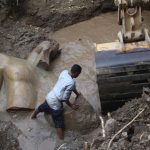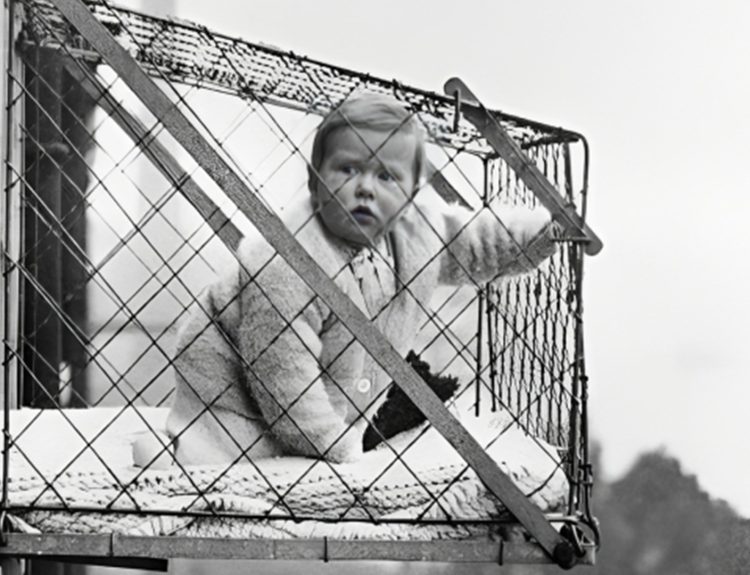Step back in time and take a glimpse at history through these rare and unseen photos. Each one captures a moment in time, providing a unique perspective on the past. From people and places to events and everyday life, these photographs offer a window into history that is not often seen. These images are sure to spark your curiosity and interest, giving you a deeper understanding and appreciation of the past. So sit back and enjoy this collection of historical photos that you’ve never seen before.
Snapshot in Time: Unbeknownst Mime in Central Park turns out to be the young, undiscovered Robin Williams
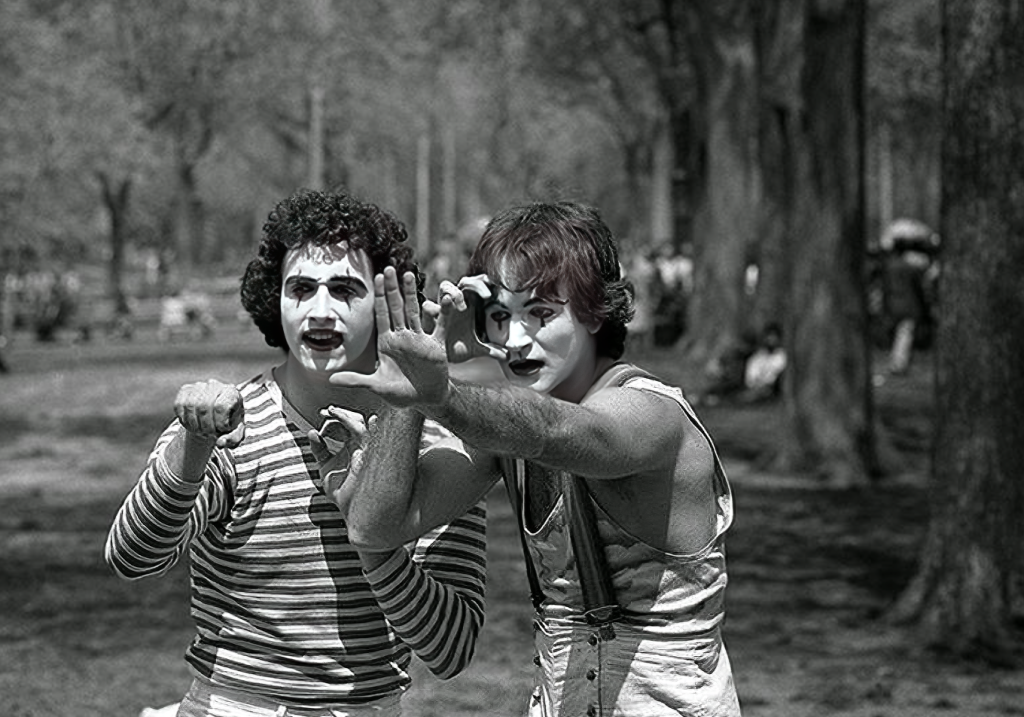
In 1974, a photographer named Daniel Sorine was taking pictures of mimes in Central Park. He took lots of photos of different mimes, just for fun. But he didn’t realize that one of the mimes he took a picture of was a young and undiscovered Robin Williams! It took him 30 years to realize that the random photo he took was actually of the famous actor.
It’s pretty wild to think that a famous person like Robin Williams was just a regular person back in 1974, doing regular things like being a mime in Central Park. It just goes to show you never know who you might be running into and how they might become famous one day. It’s also interesting to think about how pictures can hold memories and how sometimes you don’t realize the significance of a photo until years later.
Against All Odds: F-1 Pilot Cheats Death with Low Altitude Ejection and Survives with Minor Injuries, 1962
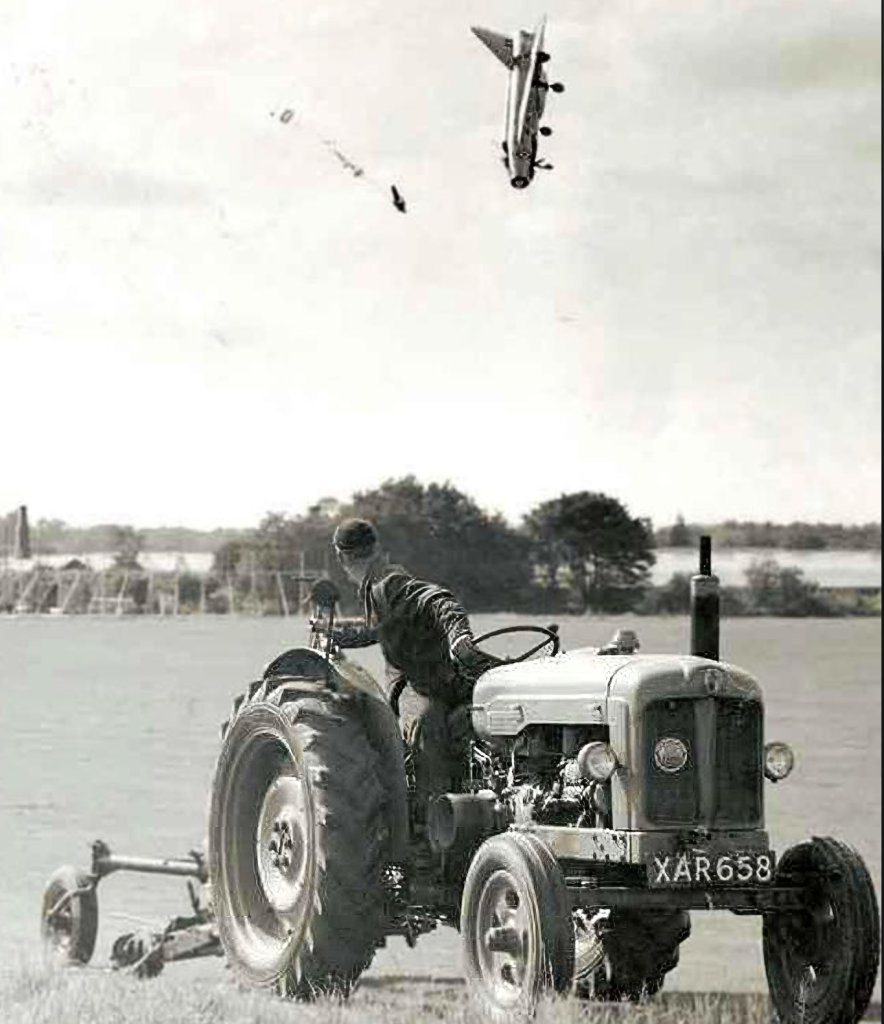
An F-1 pilot had a pretty scary experience in 1962. He had to eject from his plane at a super low altitude! Ejecting means using a special seat that shoots you out of the plane in an emergency. But doing it at a low altitude is dangerous because you don’t have much time to open your parachute before hitting the ground. This pilot was lucky though, he survived with only minor injuries.
It’s pretty amazing that the pilot was able to survive such a dangerous situation. Ejecting at a low altitude is risky and not many people survive it. It shows how pilots are trained to handle emergency situations and how they are prepared to make quick decisions to save their lives. It’s important to remember that even with all the technology and safety measures, flying can still be dangerous, and pilots are trained to handle those situations.
Speeding into the Future: Young Men Enjoy their Brand New, High-Speed Vehicle in Ohio, 1924
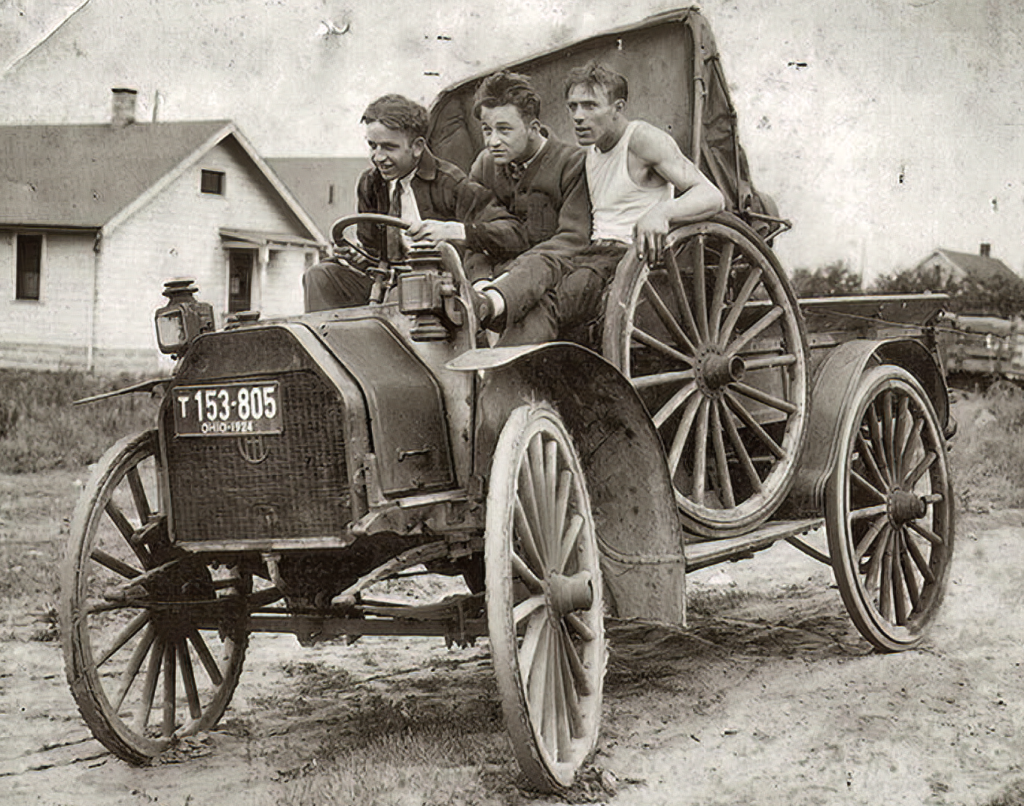
In this photograph, we can see a group of young men enjoying their brand new vehicle in Ohio in 1924. The photograph captures the excitement and joy of the young men as they take their new vehicle for a ride. The vehicle, which traveled at a speed of 25 miles per hour, was considered to be quite fast at the time. The photograph shows us what it was like to have a new vehicle in the 1920s, and it gives us a sense of the technological advancements that were taking place during that time.
The photograph is a reminder of how much technology has advanced since the 1920s. Vehicles today can travel at much faster speeds than 25 miles per hour. Additionally, it shows how the automobile changed the way people lived, worked and traveled. It also gives us a glimpse of what was considered a luxury item back then, and how it has become a necessity today. The photograph is a valuable historical document that brings us closer to understanding the past and its lessons.
A Blast from the Past: Bill Gates’ 1994 CD-ROM Prediction Brings Back Memories
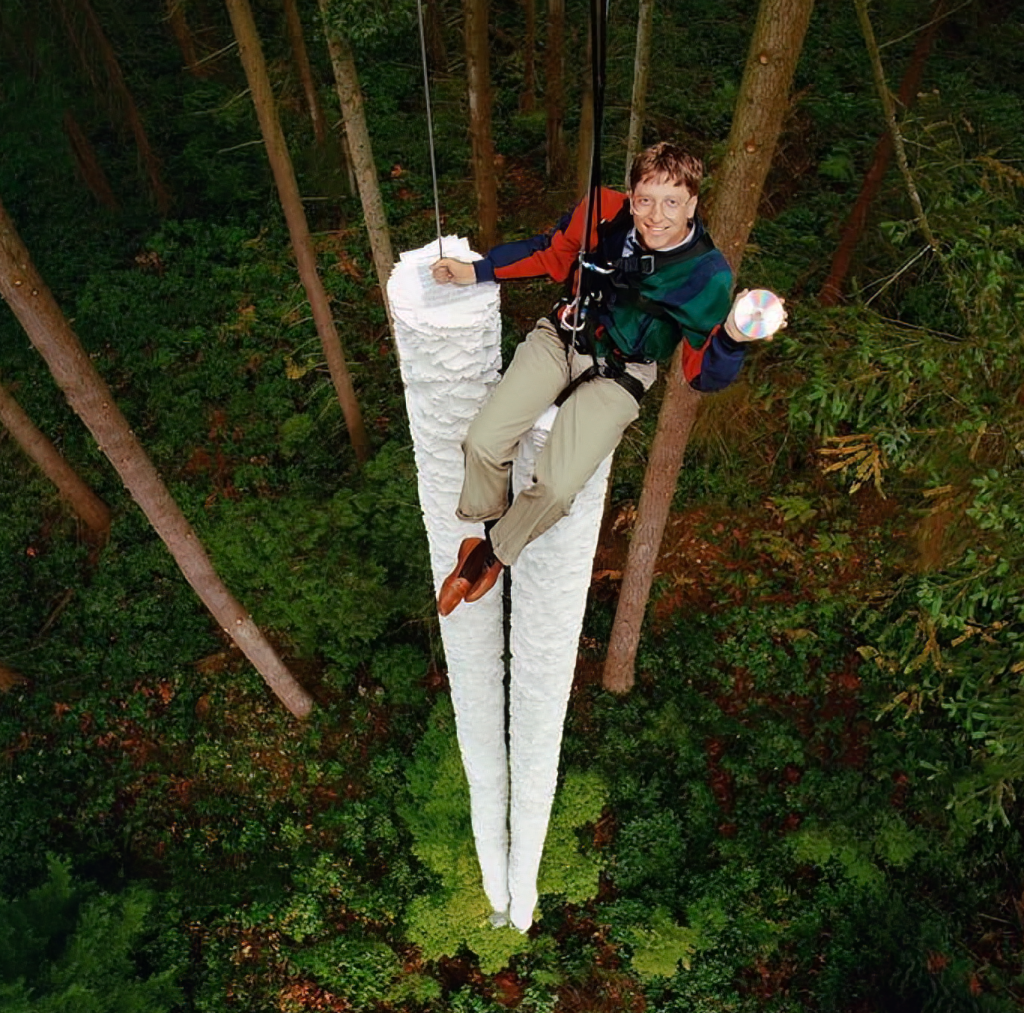
In 1994, Bill Gates said something pretty impressive. He said that a CD-ROM, which is a small disc you can put into a computer, can hold more information than a whole pile of paper! That’s like saying you can fit a whole library on just one little disc. Back in 1994, not many people were using CD-ROMs yet, so what Bill Gates said was a big deal. It meant that computers could store and share lots of information in a really small space.
Today, CD-ROMs are not as commonly used as before. Instead, we use USB drives, hard drives, and cloud storage to store and share information. This means we can store even more information and access it easily from anywhere. It’s amazing to think about how much technology has changed since 1994 and it continues to evolve.
Did someone say a customized bed?
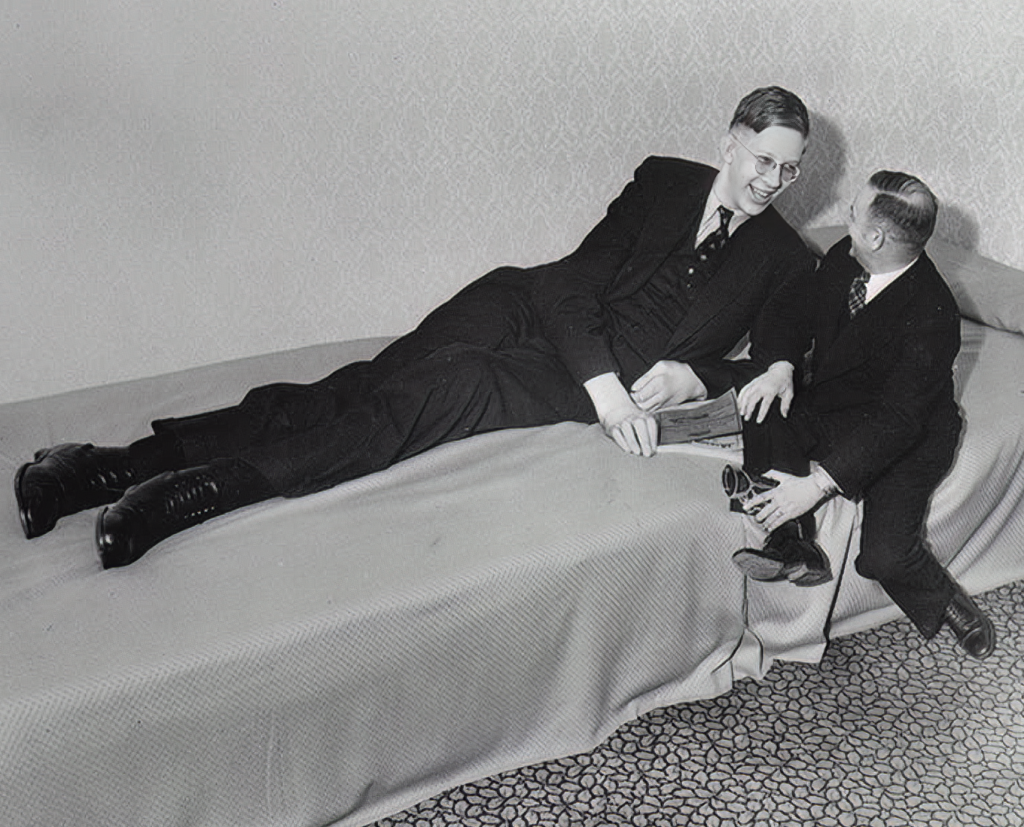
Nineteen-year-old Robert Wadlow was a very tall man. He was 8 feet and 7 inches tall, which makes him the tallest person in recorded history! In this picture taken in 1937, we can see him dwarfing his friend in Omaha, Nebraska. But what’s even more amazing is that he grew another 4 inches before his death in 1940!
It’s hard to imagine being so tall, and it must have been difficult for Robert to navigate the world. But despite his height, he was able to live a relatively normal life and even had a successful career as a traveling spokesperson for the shoe industry. It’s interesting to see how he used his height to his advantage and how he must have had to adapt to a world that wasn’t built for someone of his stature. It’s also important to note that Robert’s height was due to a medical condition, and it’s important to be respectful of differences in people’s bodies and health.
A High Altitude Lunch Break: Charles Ebbets Captures Iconic “Lunch atop a Skyscraper” Photograph in 1932
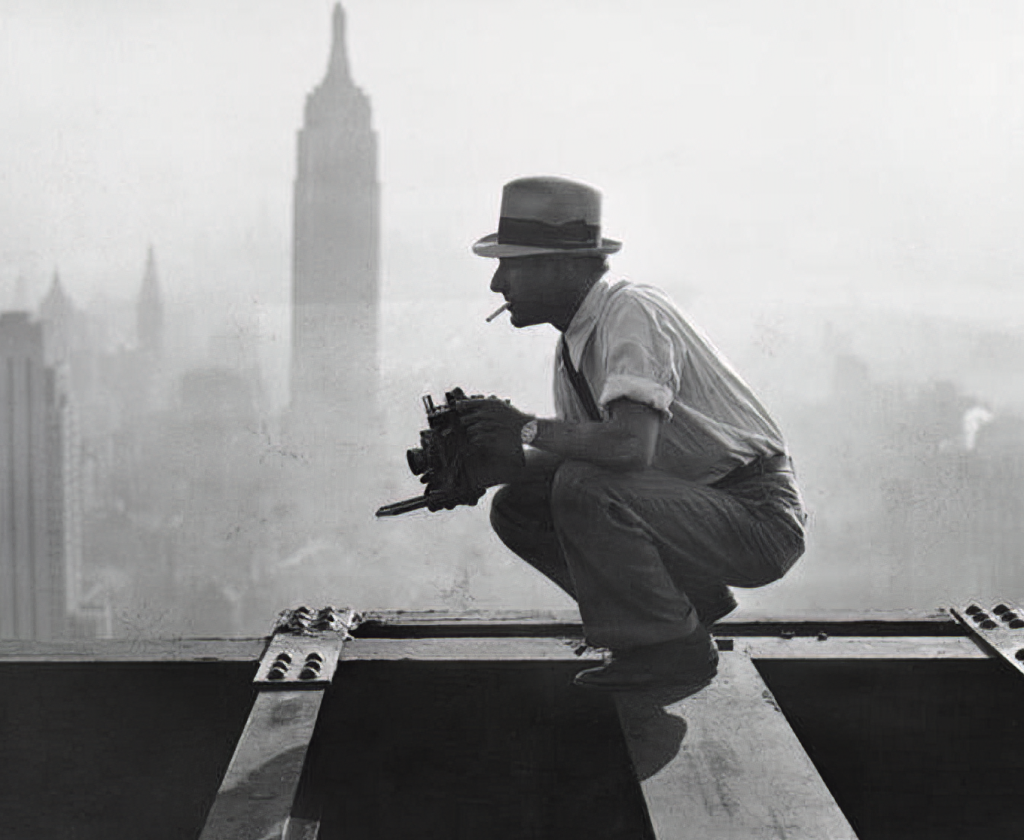
In 1932, Charles Ebbets had an idea to capture a unique photograph. He climbed to the 69th floor of the GE building and took a picture of construction workers having lunch on a steel beam. This photograph, known as “Lunch atop a Skyscraper,” is now an iconic image that represents the construction of skyscrapers in the early 20th century. The photograph captures a moment in time, showing the workers taking a break from their labor, enjoying their lunch and having a good time, despite the danger of their job.
The photograph “Lunch atop a Skyscraper” is not only visually striking but also tells a story about the lives of construction workers during that time period. It captures the spirit of the workers, showing their resilience and camaraderie. It also reminds us of the incredible feats of engineering that were accomplished to build the skyscrapers that are now an integral part of our cities. The photograph is a testament to the hardworking men and women who built the modern world we live in today.
Wormwood Street in Ruins: IRA Bombing Leaves London Streets Devastated on April 24, 1993
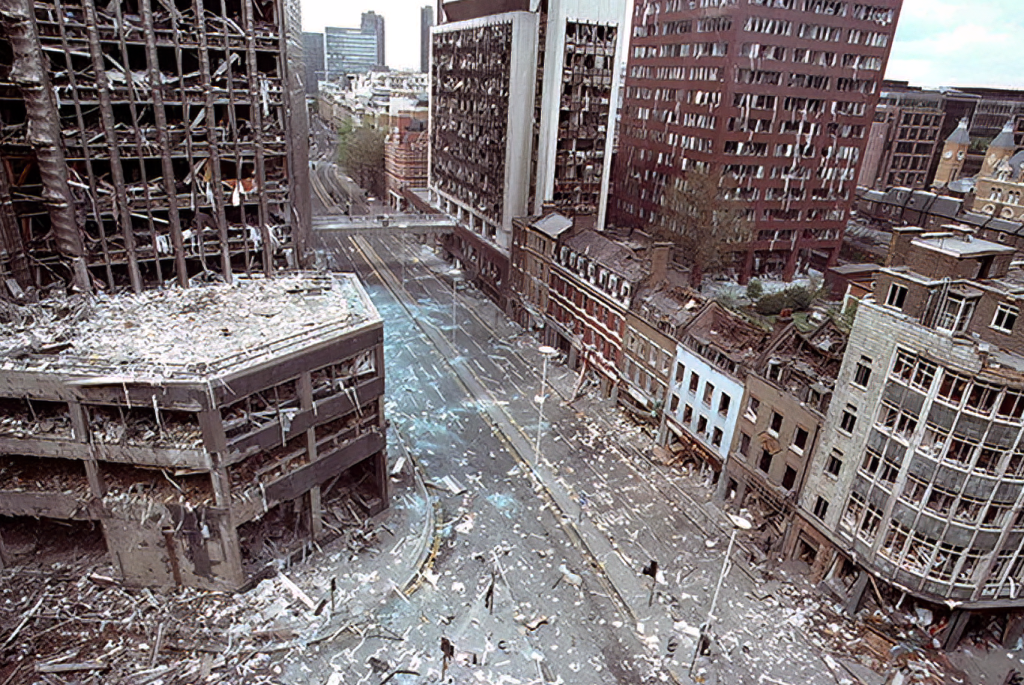
On April 24, 1993, London was the victim of a terrorist attack when the IRA detonated a truck bomb on Wormwood Street. The bomb caused a lot of damage to the buildings and cars in the area, it was a very destructive attack. Many people were injured and some even lost their lives. This was a horrible event that caused a lot of pain and suffering for the people affected.
Terrorist attacks like this one are meant to cause fear and chaos, and they often do just that. It’s important to remember that these attacks do not define a city or a country, and the resilience and strength of the people affected should be celebrated. These events also bring communities together and show the importance of unity and support for one another. It is a reminder that we must always be vigilant against hate and violence and stand together against terrorism.
Rare Color Photograph of B-17 Bombardier in Flight During WWII, c. 1940s
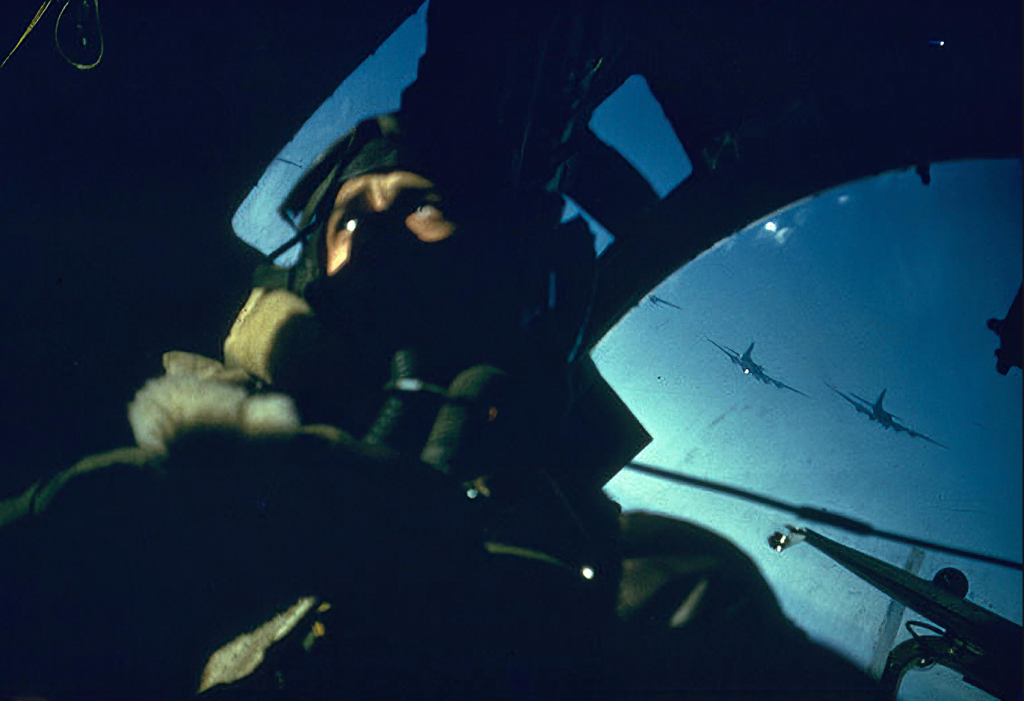
This photograph of a B-17 Bombardier heading towards Germany during WWII is one of the few color images taken from that era. The photograph captures the powerful and imposing aircraft as it soars through the sky. It’s a rare glimpse into the past, showing us what it was like for pilots during the war. The photograph gives us a sense of the scale of the aircraft and the technology that was used during WWII. The color also gives us a more vivid and realistic view of the scene, as opposed to the black and white images that were more common during that time.
This photograph is a unique window into history. It captures a moment in time and gives us a sense of what it was like for pilots during WWII. The photograph also reminds us of the sacrifices made by soldiers during the war and the technology that was used during that time period. It’s a powerful reminder of the past and it serves as a valuable historical document. Additionally, the photograph is a testimony of the photographer’s skill and the technology of the time.
Let’s see how you get out of this one! Colonel Anthony Biddle’s Unconventional Training

Colonel Anthony Biddle was a man who did things differently. He was known for ordering his trainees to try to kill him with bayonets, which are long knives that can be attached to the end of a rifle. But the crazy part is that he was able to disarm them all! This type of training is not common and some people might think it’s a bit extreme, but Colonel Biddle believed that it was necessary to prepare his trainees for real-life combat situations.
It’s quite impressive that Colonel Biddle was able to disarm all of his trainees, even though they were trying to kill him with bayonets. It shows that he was a skilled and experienced warrior and it also shows that his training methods were effective. It’s important to note that this type of training is not the norm and should not be replicated without proper training and knowledge. But it’s interesting to know that this type of training existed and that it had its purpose.
A Meeting of Icons: Marilyn Monroe and Queen Elizabeth Shake Hands at Film Premiere in London, 1956

In this photograph, we can see the iconic Marilyn Monroe shaking hands with Queen Elizabeth at a film premiere in London in October 1956. Both women were 30 years old at the time. The photograph captures a moment in time when two of the most famous women in the world met. Queen Elizabeth, who was then a young queen, and Marilyn Monroe, who was at the height of her fame, met at the premiere of The Battle of Waterloo. The photograph is a glimpse into the past, showing us what it was like for these two women to meet during that time.
This photograph is a valuable historical document that brings us closer to understanding the past and its lessons. It reminds us that even though Queen Elizabeth and Marilyn Monroe lived in very different worlds, they were both 30 years old at the same time and were able to meet. The photograph is also a reminder of how fame and celebrity have changed over time. Queen Elizabeth has been a public figure for most of her life, while Marilyn Monroe’s fame was relatively short-lived. The photograph is a reminder of the fleeting nature of fame and the impact that it has on those who experience it.
A Celestial Collision: Ann Hodges Survives Meteor Strike in 1954

In 1954, Ann Hodges became the only known person to be struck by a meteor. The meteorite hit her while she was napping on her couch, leaving her with a large bruise on her hip. Although she was injured, she managed to survive the incident. In this photograph, we can see Dr. Moody Jacobs showing off the bruise left by the meteorite.
It’s hard to imagine being struck by a meteor and surviving. Ann Hodges’ story is truly a one-in-a-million chance, and her survival is a testament to the resilience of the human body. This event also serves as a reminder of the vastness of space and the things that can happen when space debris enters our atmosphere. It’s also interesting to see how the meteorite became a source of fascination for the public and how it even made its way into the news. The photograph is a unique way of showing the extent of the injury and the impact of the meteorite.
Mortar rounds keep the sky alight during World War I, 1917
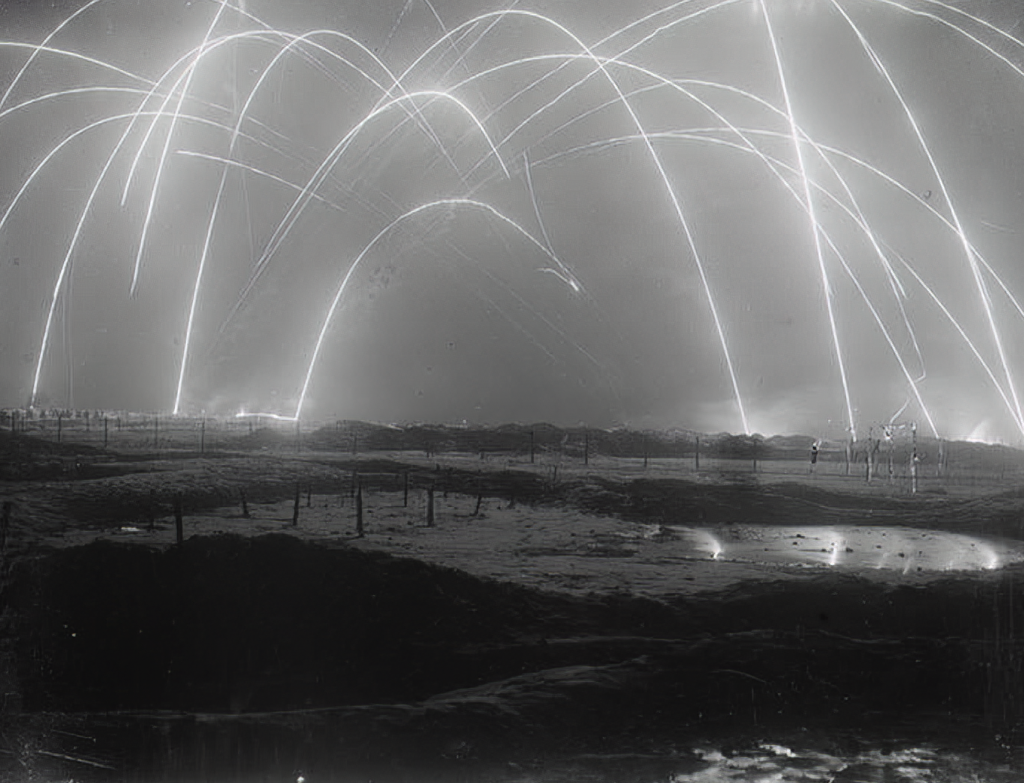
This photograph, captured by a British photographer during World War I, shows the intense combat scene of mortar rounds being fired back and forth. It gives us a glimpse of what it was like for soldiers during the war. The photo shows the chaos and destruction caused by the war, and it’s clear that the photographer was in the thick of the action. The photograph gives us a sense of the danger that soldiers faced on a daily basis and the harsh conditions of trench warfare.
This photograph is a powerful reminder of the sacrifices made by soldiers during World War I. It brings to life the realities of war, and it’s a testament to the bravery and resilience of those who fought in it. It also serves as a reminder of the devastating impact of war on human life, and it’s a powerful call to action to work towards peace and understanding. The photograph is a valuable historical document that brings us closer to understanding the past and its lessons.


